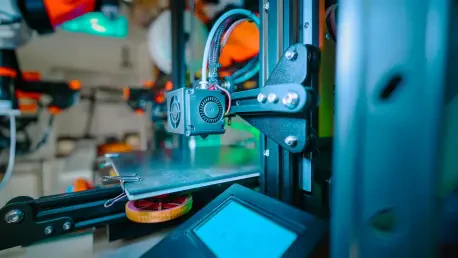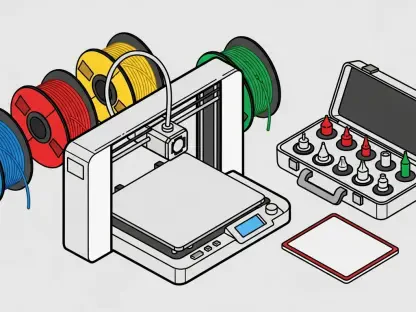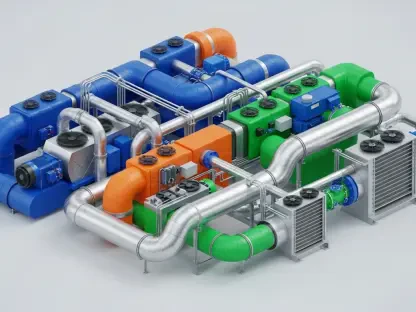What if the sleek device in your hand was crafted with a technology that slashes waste and redefines design limits? Apple has turned this vision into reality by embedding metal 3D printing, also known as Additive Manufacturing (AM), into its latest flagship products. Unveiled on September 9, this groundbreaking move introduces AM in the titanium cases of the Apple Watch Series 11 and Ultra 3, as well as the USB-C housing of the iPhone Air. This isn’t just a manufacturing update; it’s a glimpse into how consumer electronics can evolve with precision and sustainability at the forefront.
This shift marks a pivotal moment for the tech industry, where innovation meets environmental responsibility. Apple’s adoption of metal 3D printing showcases the technology’s readiness for high-volume production, proving it can meet the stringent quality demands of millions of devices. Beyond technical achievement, this step aligns with global pushes for greener practices, positioning Apple as a leader in rethinking how premium gadgets are made. The significance lies not only in the products themselves but also in the broader potential to inspire a manufacturing revolution across sectors.
A Bold Step in Manufacturing Innovation
Apple’s integration of metal 3D printing signals a seismic shift in how high-end devices are produced. This technology, once limited to prototypes and niche applications, now powers the creation of intricate components for devices expected to reach millions of users globally. The titanium cases of the latest Apple Watches and the iPhone Air’s charging port housing stand as testaments to a process that builds objects layer by layer, offering unprecedented control over design and material use.
The implications extend far beyond a single company’s portfolio. By scaling AM to such a massive level, Apple demonstrates confidence in the technology’s reliability and cost-effectiveness for mainstream use. This could redefine standards in consumer electronics, pushing competitors to explore similar methods to stay relevant in a market that increasingly values both innovation and efficiency.
Sustainability at the Core of Tech Progress
In a world grappling with e-waste and carbon emissions, Apple’s pivot to metal 3D printing addresses critical environmental challenges. The company utilizes 100% recycled titanium for the Apple Watch cases, cutting raw material needs by 50% compared to traditional methods. For the iPhone Air’s USB-C housing, material usage drops by 33%, all while production runs on renewable energy across the supply chain, supporting the ambitious Apple 2030 carbon neutrality goal.
This focus on sustainability resonates with growing consumer demand for eco-conscious products. The reduction in waste and energy consumption through AM offers a model for how technology can align with planetary needs. As industries face mounting pressure to lower their environmental footprint, Apple’s strategy provides a tangible example of balancing profitability with purpose.
The Technical Edge Behind the Breakthrough
Delving into the specifics, Apple’s use of metal 3D printing unlocks design possibilities that traditional manufacturing struggles to match. The titanium components of the Apple Watch Series 11 and Ultra 3 feature complex geometries and lightweight structures, optimizing performance without sacrificing durability. Similarly, the iPhone Air’s USB-C housing benefits from a thinner, stronger build, showcasing AM’s ability to refine even the smallest parts.
While exact methods remain undisclosed, industry speculation points to processes like Laser Beam Powder Bed Fusion (PBF-LB) and Binder Jetting (BJT). PBF-LB creates fully dense parts directly in the build chamber, whereas BJT involves a post-sintering step to achieve density. Both require extensive post-processing, including CNC machining and polishing, to meet Apple’s signature premium finishes, highlighting the intricate workflow behind these innovations.
The role of a robust supply chain cannot be overstated. Likely leveraging established AM expertise, particularly in regions like China where capabilities rival global leaders, Apple ensures scalability. This technical prowess, combined with meticulous attention to detail, sets a high bar for what AM can achieve in consumer-facing products.
Industry Voices Weigh In on the Shift
Experts across the tech and manufacturing sectors are taking note of Apple’s bold move. A recent analysis from additive manufacturing specialists suggests that this endorsement could catalyze widespread adoption of AM in consumer electronics, predicting a domino effect over the next few years. The visibility Apple brings to the technology elevates its credibility, making it a viable option for other major players.
Supply chain insights reveal the challenges of achieving Apple’s iconic aesthetic standards. Unnamed partners emphasize that post-processing plays a crucial role, echoing the complexity seen in past collaborations between AM equipment makers and surface treatment firms for premium goods like jewelry. This mirrors Apple’s earlier mastery of Metal Injection Molding for Lightning connectors, where hundreds of millions of parts have been produced since 2012, proving a track record of scaling powder-based technologies.
Lessons from Apple’s Manufacturing Playbook
Apple’s adoption of metal 3D printing offers valuable takeaways for anyone tracking tech trends or seeking to innovate in their own field. Consider the sustainability angle: with AM reducing titanium use by half for watches, similar efficiencies could transform material-heavy industries. Tracking such metrics can reveal opportunities to streamline operations while meeting environmental targets.
Design freedom is another key lesson. The ability to craft intricate, lightweight structures through AM pushes the boundaries of product development. This principle can inspire fresh approaches, whether in creating consumer goods or industrial tools, by prioritizing complexity without added cost.
Finally, scalability remains critical. Apple’s reliance on global partnerships, especially in advanced manufacturing hubs, underscores the need for strong networks to adopt cutting-edge processes. Assessing supply chain readiness can be the difference between a successful rollout and a stalled initiative, offering a practical framework for applying these insights to diverse contexts.
Reflecting on a Manufacturing Milestone
Looking back, Apple’s integration of metal 3D printing into its flagship devices on September 9 stood as a defining moment for consumer electronics. It bridged the gap between cutting-edge technology and sustainable production, setting a precedent for what was possible at scale. The journey from niche application to mainstream manufacturing underscored a transformative era in how products were conceived and crafted.
As this technology gained traction, the path forward pointed toward broader adoption across industries hungry for efficiency and innovation. Exploring how AM could reshape other sectors, from automotive to healthcare, became the next logical step. The challenge rested in harnessing these advancements to not only enhance design but also address pressing global issues like resource scarcity, ensuring that progress remained both impactful and enduring.









